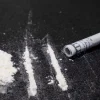The Importance of Detox for Alcohol Use Disorders
Alcohol use disorder (AUD) is a pattern of alcohol consumption characterized by the compulsive use of alcohol even when it causes you significant problems. This chronic disorder often involves drinking more to feel the same effect and experiencing alcohol withdrawal symptoms when you drastically reduce your alcohol consumption or stop drinking.
If you have been drinking excessive alcohol for a prolonged period, your body will become dependent on the depressant. The brain will gradually stop producing some chemicals and rely on the drug, making you dependent. So when you stop drinking, your body may take some time to adjust, leading to alcohol withdrawal symptoms.
Alcohol Detox Hotline – Immediate Help
888-290-5254
Alcohol detoxification is often the first step for most alcohol addiction treatment programs. Detox entails completely flushing alcohol from your body, allowing you to focus on other aspects of the treatment program, like therapy and counseling.
According to the Centers for Disease Control and Prevention (CDC), about 15% of adults in Tennessee binge drink regularly. Excessive alcohol consumption has devastating effects on your physical, mental, and emotional well-being.
Luckily, Resurgence Tennessee offers a wide range of evidence-based strategies to treat alcohol use disorders. Keep reading to find out more about effective treatments for alcohol detox at Resurgence and how to get started on a path to sobriety!
What are the Signs of an Alcohol Use Disorder?

An AUD or alcoholism is a pattern of alcohol use that involves problems with controlling your drinking and being preoccupied with alcohol.
Unhealthy alcohol use is the use of alcohol to the extent that it risks your safety or health. It also includes heavy and binge drinking, which can adversely affect your health and safety.
If your drinking behavior or pattern causes repeated distress and issues that prevent you from functioning normally in your daily life, you may be suffering from an alcohol use disorder. AUDs range from mild to severe, and signs vary widely based on the severity of the disease and the client’s characteristics. However, even a mild AUD can lead to life-threatening problems, making early interventions essential.
Below are some of the top signs of alcohol addiction:
- Having no control over how much alcohol you consume
- Having the goal or the intention to reduce alcohol consumption but failing to do so
- Devoting a great deal of time to obtaining, drinking, or recuperating from alcohol use
- Experiencing an intense craving for alcohol
- Consistently abusing alcohol and subsequently failing to meet critical duties at work, school, or home
- Refusing to stop drinking while knowing that doing so is causing severe health, social, occupational, or interpersonal issues
- Neglecting or abandoning your social, professional, and recreational obligations to focus on alcohol consumption.
- Intoxication is caused by the use of alcohol when it’s not appropriate, such as while driving or swimming.
- Increased alcohol tolerance, which makes you need larger doses to achieve the same effect or experience less of an impact from drinking the same amount of alcohol.
- You may experience alcohol withdrawal symptoms when you stop drinking.
What Is Considered One Drink?
According to the National Institute on Alcohol Abuse and Alcoholism (NIAAA), one standard drink refers to any of the following:
- 12 ounces or 355 milliliters of standard beer with an alcohol content of about 5%
- 8 to 9 ounces or 237 to 266 milliliters of malt liquor which is approximately 7% alcohol
- 5 ounces or 148 milliliters of wine with about 12% alcohol
- 1.5 ounces or 44 ml of a high-proof spirit or hard liquor with about 40% alcohol
24 Hour Alcohol Addiction Treatment
888-290-5254
What are the Different Drinking Levels?
There are various levels of alcohol consumption. They include:
Moderate Drinking
Published by the U.S. Department of Health and Human Services and the Department of Agriculture, The Dietary Guidelines for Americans 2020-2025 recommend that adults of legal drinking age abstain from alcohol entirely or consume no more than two drinks per day for men and one drink per day for women. For health reasons, drinking in moderation is preferable to excessive alcohol consumption.
Binge Drinking
There are various definitions of binge drinking from varying agencies.
The National Institute on Alcohol Abuse and Alcoholism defines binge drinking as drinking excessively to the point that one’s blood alcohol concentration (BAC) is 0.08 percent or above, or 0.08 grams of alcohol per deciliter. This pattern of drinking is equivalent to a typical adult male taking five or more drinks in about two hours or four or more drinks for females in the same time frame.
According to the National Survey on Drug Use and Health (NSDUH), conducted annually by the Substance Abuse and Mental Health Services Administration (SAMHSA), binge drinking is defined as consuming five or more alcoholic drinks for men and four or more for women in the same occasion. This timeframe means at the same time or within a couple of hours of each other on at least one day in the past month.
What is Alcohol Detox?

According to the National Institutes of Health, alcohol detoxification is a period during medical treatment where a person is assisted in overcoming psychological and physical dependence on alcohol. Detox aims to help the patient stop using alcohol, eliminate traces of the substance from the body, reduce withdrawal symptoms, and address any underlying medical or mental health issues.
Meeting the objectives of the detox process ensures that the client is ready to enter a long-term rehab or treatment program. Comprehensive treatment and rehab programs incorporate psychological, familial, and social interventions to help you maintain abstinence from alcohol. Alcohol detoxification can be successfully completed in an inpatient or outpatient setting.
The Detox Process for Alcohol
Detoxification from alcohol is the first stage in a more extensive rehabilitation process. Although detox can be done successfully in inpatient and outpatient settings, heavy alcohol users should ideally be under 24-hour medical supervision throughout the process.
The three main phases of detoxification include:
- Intake: To properly assess each new patient, the medical staff will analyze their medical, pharmacological, and mental health histories.
- Medication: Medications that mimic alcohol’s effects are commonly used in detox programs to ease the discomfort of withdrawal. Medication options may also exist for dealing with co-occurring disorders or pain.
- Stabilization: During stabilization, the client is treated with medical and psychological interventions to achieve harmony between the mind and the body.
- Continual reassessment: Continuous monitoring and reassessment are essential parts of detox. This is because a client’s condition may change drastically during alcohol withdrawal.
If you’ve been struggling with alcohol addiction, contact our compassionate team for a confidential consultation on substance abuse treatment by calling (888) 305-3170.
What are the Side Effects of Alcohol Detoxification?
Medically-assisted detox helps ease some unpleasant withdrawal symptoms, but others cannot be eliminated. There are varying side effects for the two main phases of alcohol detox.
Phase 1: Acute Withdrawal Symptoms
This initial phase can last several days or weeks after you stop drinking. Alcohol withdrawal syndrome signs are the most severe during this stage, and it often involves a wide range of symptoms such as:
- Anxiety
- Convulsions
- Hallucinations
- Delirium tremens (DTs)
- Body-wide tremors
- Nausea and vomiting
- Insomnia
- Excess perspiration
- Heart failure
- Hypertension
Phase 2: Early Abstinence
This second phase of alcohol detox is more drawn-out and can take more than a month. During early abstinence, the brain gradually returns to a state of regulation and normal functioning. Post-acute withdrawal syndrome encompasses a wide range of mild symptoms, including but not limited to the following:
- Restlessness
- Anxiety
- Insomnia
- Low appetite
- Depression
- Mood swings
Delirium Tremens (DTs)
DTs is among the most severe symptoms of alcohol withdrawal. It usually takes two or three days without alcohol for delirium tremens to set in. Still, some people may experience it after more than a week. Delirium tremens can compromise the body’s ability to regulate temperature, respiration, blood pressure, and heart rate.
Common symptoms of delirium tremens include confusion, disorientation, anxiousness, agitation, irrational beliefs, drenching sweats, sleep difficulties, hallucinations, and loss of consciousness. This condition can occur, which can temporarily restrict blood flow to the brain and poses a severe risk of dehydration.
What is the Alcohol Withdrawal Timeline?

Research suggests that you should expect the following alcohol withdrawal symptoms at different timelines:
6 hours
About six hours after your last drink, you may start to feel some mild withdrawal symptoms. Withdrawal seizures can occur as early as six hours after someone with a history of heavy drinking stops drinking.
12 to 36 hours
A small percentage of those experiencing alcohol withdrawal experience hallucinations. They may perceive realities where none exist.
24 to 48 hours
During this period, you may still experience mild withdrawal symptoms. Headaches, shakiness, and nausea are some possible side effects. Minor withdrawal symptoms often peak between 18 and 24 hours and begin to subside between 4 and 5 days.
48 to 72 hours
Extreme alcohol withdrawal symptoms, known as DTs, might affect some people. Extremely rapid heartbeat, convulsions, and feverishness are all symptoms of this disorder.
72 hours
Alcohol withdrawal symptoms typically peak around this time. Moderate withdrawal symptoms might sometimes persist for up to a month. Among these are a racing heart and hallucinations.
Why You Need Help for Alcohol Withdrawal
Getting sober with the help of professionals has many advantages. Going through alcohol withdrawal in a treatment facility can help keep you safe. However, it is not always easy to determine who would experience life-threatening or severe withdrawal symptoms during alcohol detox. You may rest easy knowing that any difficulties that develop will be handled when you’re in a medically monitored setting with round-the-clock care.
Detoxing at an alcohol detox center may help prevent a relapse. It can be challenging to cope with withdrawal symptoms on your own, even if they aren’t life-threatening. This may prompt you to drink again to alleviate your discomfort. The discomfort of quitting alcohol use disorder can be lessened with the help of drugs and comfort care provided by a medical detox program. Detoxing in an inpatient facility eliminates the temptation of having alcohol around, among other benefits.
24/7 Drug Withdrawal Hotline – Call Now!
888-290-5254
Entering an alcohol detox program may be the first step toward more extensive care. Detox is a necessary step in the therapy of alcoholism, but it is not a treatment program in and of itself, and it does nothing to alter long-term alcohol abuse because it solely tackles physical alcohol dependence rather than the underlying psychosocial disorders that contribute to alcohol abuse.
Contact Resurgence Tennessee for advice on how to reclaim your life from addiction.
Medications Used for Alcohol Withdrawal

Maintaining your physiological stability is an essential part of the detox process. Medication and supplements are sometimes required to keep clients’ systems in balance and address nutritional deficiencies. Benzodiazepines, such as Librium, Valium, and Ativan, are frequently used in alcohol treatment because they alleviate withdrawal symptoms and prevent seizures.
Anti-convulsant medications, such as Keppra, are also frequently administered alongside standard alcohol withdrawal treatment because seizures are a leading cause of death during alcohol detox.
Benzodiazepines are useful in treating or preventing some symptoms of alcohol withdrawal. Still, it is crucial that a recovering alcoholic only take the drug in the dosage prescribed by a doctor. As with any addictive substance, benzodiazepines require strict supervision during usage.
1. Benzodiazepines
During alcohol detox, benzodiazepines or benzos are commonly used to relieve withdrawal symptoms. They are used for sleeplessness, anxiety, and muscle spasms, and they assist calm the central nervous system.
The drug is available in both short- and long-acting varieties. Long-acting benzodiazepines are typically prescribed for the three-day treatment or used as needed. The two most commonly given benzos for inpatient rehabilitation are chlordiazepoxide (Librium) and diazepam (Valium).
2. Naltrexone
During the detox process, naltrexone can lessen the desire to drink. When used to treat relapse, naltrexone blocks the euphoria alcohol can produce. You should wait 7-10 days before taking naltrexone because it can trigger withdrawal symptoms. Tablets and an injectable version are available. The oral pill forms of naltrexone are marketed under the names ReVia and Depade, and the injectable form is marketed under the name Vivitrol.
3. Acamprosate
Heavy drinking over several years can affect the structure and function of the brain. Taking acamprosate, also known as Campral, can help your brain usually operate again after you’ve stopped drinking.
Acamprosate can alleviate some signs and symptoms of post-acute withdrawal syndrome (PAWS), such as sleeplessness, nervousness, and irritability. It helps lessen the desire to drink alcohol but will have no adverse side effects if alcohol is ingested at the same time.
4. Disulfiram
Disulfiram is another drug prescribed for alcoholics. Disulfiram works differently than other drugs in that it causes severe side effects if alcoholic beverages are ingested while taking the drug.
Drinking alcohol while taking disulfiram, for instance, might cause unpleasant side effects such as flushing of the face, nausea, headache, weakness, and low blood pressure. The side effects discourage you from maintaining your current drinking routine. Disulfiram is not intended to treat withdrawal symptoms or restore brain function.
Inpatient and Outpatient Detox for Alcohol
Outpatient detox programs usually entail undergoing treatment when living at home, while inpatient detox programs require you to live in the detox facility throughout treatment.
Patients undergoing outpatient detoxification must report for treatment five days a week. Depending on the program, the sessions could occur during the day or the evening.
On the first day of outpatient detoxification, addiction specialists assess the client’s medical history, conduct a physical exam, order any necessary laboratory investigations, and start detoxification treatment. While the initial day may last about two hours, subsequent sessions can last between 15 to 30 minutes.
Outpatient alcohol detox programs often last between three and 14 days. Patients receiving inpatient care reside at the facility for about five days to two weeks.

Pros and Cons of Outpatient Detoxification
Outpatient detoxification is best for clients with mild to severe alcohol withdrawal syndrome, characterized by symptoms such as hand tremors, heart palpitations, restlessness, and lack of appetite. Clients who initially undergo outpatient detoxification may benefit from continuing their care at the same treatment facility for the duration of their outpatient recovery program.
Consider outpatient care if you want to continue attending to your work, school, or home responsibilities while attending treatment. Clients treated as outpatients can keep up with daily life. They have more independence, can keep up with their regular lives with less interference from medical staff, and have lower treatment expenditures overall than those receiving inpatient care.
However, outpatient detox increases the risk of relapse because clients have easy access to alcoholic drinks. Living at home during treatment also exposes you to various triggers and enablers for alcohol use. Outpatient detox isn’t safe for alcohol users with potentially fatal withdrawal symptoms or clients with preexisting medical or mental health issues.
Advantages of Inpatient Alcohol Detoxification
Clients who do not qualify for outpatient detoxification are candidates for inpatient detoxification. The advantages of inpatient care include ready access to therapy for significant complications and around-the-clock medical care and monitoring from trained professionals. Clients are also protected from the influence of alcohol in such environments, which provides them with a haven away from the general substance abuse community.
The most significant drawback of inpatient detoxification is the higher cost compared to outpatient treatments. Patients may feel relieved from their obligations and develop an unhealthy dependence on the hospital staff while receiving inpatient care.
How Long Will Alcohol Detox Take?
Detoxing from alcohol can take anything from a few days to weeks, depending on various factors, such as:
- Amount and frequency of alcohol consumption
- To what extent alcohol was used in conjunction with other drugs
- Any preexisting physical or psychological conditions
- Family history
- Gender
- Age
- Body weight
On average, detox lasts one week but can stay longer or shorter depending on the individual and the severity of their addiction. In extreme circumstances, it may take longer. Even after detox, it may take several weeks or months for the mind and body to recover from the effects of the addiction.
The length of time required to withdraw is also influenced by the liver. It may take a more extended period for the liver to repair if the addiction has caused significant damage to the organ’s ability to digest alcohol.
Transitioning from Detoxification to Rehabilitative Treatment
Interventions used in alcohol addiction treatment and rehabilitation are often introduced during the detoxification phase. These measures should be implemented as soon as practicable. Examples of such interventions include therapy for psychological, physical, familial, and other needs. Addiction specialists can also use cue exposure, which involves repeated exposure to the sight, smell, and taste of alcohol without the intoxicating effects.
Detoxification does not affect overall treatment outcome, although the relative merits of inpatient and outpatient settings may mean that one is better for a specific patient. Determining which setting will be best for your AUD treatment plan is often complex.
For example, the increased independence offered to patients in outpatient detoxification programs may have positive and negative outcomes. A thorough assessment is needed before treatment specialists can determine whether you might benefit from having this freedom and if you would be at risk if given it.
The Potential Risks of Cold Turkey Detox

Detoxing cold turkey can be harmful and even lethal, especially for those who have been abusing alcohol for a lengthy period. Alcohol detox can cause severe adverse effects like:
- Anxiety
- Seizures
- Heart arrhythmias
- Aspiration pneumonia
- Headaches
- Insomnia
- Depression
- Nausea
- Disorders of the kidneys or liver
- Fever
- Intense cravings
- Hallucinations
If you or someone you know has to detox from alcohol, getting medical help is your best bet for minimizing unpleasant withdrawal symptoms.
Getting Ready for Alcohol Detox
Alcohol abuse has various adverse effects on your health and life. If you understand the negative impact that alcohol may have on your health, you may be ready to undergo detox and get sober.
Having a sense of preparedness can be helpful as you start down the road to sobriety. Detox is increasingly seen as something that should be done when the patient is mentally and emotionally prepared to do so. The willpower to undergo and complete detox is essential while dealing with withdrawal symptoms.
You can increase your preparation for detox by taking specific steps. Therapies like motivational counseling can help you get psyched up for the challenge and set you up for success. One form of motivational counseling, called motivational enhancement therapy (MET), focuses on getting clients to the “action stage” of change, where they establish hope for a favorable outcome from their efforts. This often helps clients believe their lives will improve after the detox process.
24 Hour Addiction Treatment Hotline
888-290-5254
The next step is discussing expectations before, during, and after detox. Talking with your therapist can help you get the most out of your treatment and stay sober after you’ve completed detox. Many rehabilitation centers also make use of motivational interviewing and contingency management, which employs the use of rewards to encourage positive changes.
However, it’s vital to remember you don’t have to be 100% ready for treatment to be effective in most cases. According to the National Institute on Drug Abuse (NIDA), a patient’s reluctance to seek treatment is not always indicative of a poor outcome. Success rates for those who enter rehab unwillingly, whether because of a court order or family pressure, are frequently comparable to those who enter rehab voluntarily.
Life After Alcohol Detoxification
If you or someone you love is struggling with alcoholism, detox is just the first step in a long road to recovery. Reducing or eliminating alcohol consumption does not treat alcoholism, but it does allow the addict’s mind and body to heal enough to accept help.
Get in touch with Resurgence Tennessee now if you want additional information on alcohol detox and rehabilitation programs.





